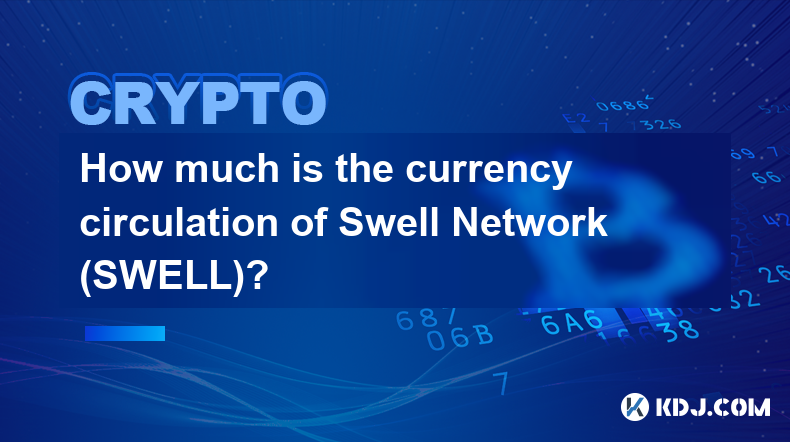-
 Bitcoin
Bitcoin $99,577.7827
2.77% -
 Ethereum
Ethereum $1,933.4035
4.93% -
 Tether USDt
Tether USDt $1.0002
0.03% -
 XRP
XRP $2.2030
2.81% -
 BNB
BNB $616.1256
1.57% -
 Solana
Solana $153.0057
3.62% -
 USDC
USDC $1.0001
0.01% -
 Dogecoin
Dogecoin $0.1830
5.50% -
 Cardano
Cardano $0.7151
4.50% -
 TRON
TRON $0.2505
1.89% -
 Sui
Sui $3.7051
8.86% -
 Chainlink
Chainlink $14.7665
5.95% -
 Avalanche
Avalanche $20.9867
5.45% -
 Stellar
Stellar $0.2722
3.79% -
 Bitcoin Cash
Bitcoin Cash $413.3602
10.19% -
 UNUS SED LEO
UNUS SED LEO $8.7924
1.21% -
 Shiba Inu
Shiba Inu $0.0...01343
4.39% -
 Hedera
Hedera $0.1859
4.67% -
 Toncoin
Toncoin $3.1187
3.38% -
 Hyperliquid
Hyperliquid $21.6882
1.30% -
 Litecoin
Litecoin $91.9648
-1.05% -
 Polkadot
Polkadot $4.2389
6.22% -
 Monero
Monero $291.7538
1.03% -
 Dai
Dai $1.0003
0.01% -
 Bitget Token
Bitget Token $4.3174
-0.22% -
 Ethena USDe
Ethena USDe $1.0004
0.01% -
 Pi
Pi $0.6225
7.32% -
 Pepe
Pepe $0.0...09208
12.98% -
 Bittensor
Bittensor $404.3195
9.62% -
 Uniswap
Uniswap $5.1820
5.18%
How much is the currency circulation of Swell Network (SWELL)?
Swell Network's currency circulation system, featuring strategic token distribution and diverse circulation mechanisms, fosters adoption, incentivizes ecosystem participation, and positions the platform as a promising player in the DeFi landscape.
Dec 08, 2024 at 01:41 pm

The Currency Circulation of Swell Network (SWELL)
Swell Network (SWELL), an innovative decentralized finance (DeFi) platform, has established a unique currency circulation system to facilitate seamless and secure financial transactions. The circulation of SWELL, the native token of the network, plays a pivotal role in enabling a robust and interconnected financial ecosystem. This article delves into the intricate details of Swell Network's currency circulation, exploring its mechanisms, distribution, and implications for the platform's growth and adoption.
- Understanding Swell Network's Token Distribution:
- SWELL's initial token distribution was strategically designed to foster widespread adoption and ensure equitable distribution among various stakeholders.
- A significant portion of SWELL tokens was allocated to the project's founding team and early investors to incentivize their contributions and support the network's development.
- A substantial supply of SWELL was reserved for community initiatives, rewards programs, and incentivized ecosystem participation, fostering community engagement and long-term adoption.
- The remaining tokens were allocated to the public through a series of token sales, providing retail investors with an opportunity to participate in the network's growth potential.
- Mechanisms for Currency Circulation:
- Transaction Fees: Every transaction conducted on the Swell Network incurs a small transaction fee, payable in SWELL tokens. These fees serve to maintain the network's infrastructure, incentivize validators, and contribute to the overall sustainability of the ecosystem.
- Network Rewards: SWELL holders who stake their tokens to support the network's security and validation processes are rewarded with additional SWELL tokens, incentivizing active participation in the platform's governance and operation.
- Community Engagement: Swell Network actively rewards community members for their contributions, such as promoting the protocol on social media, creating educational resources, and participating in community forums. These incentives encourage active engagement and foster a sense of ownership among the SWELL community.
- Decentralized Applications: SWELL tokens are seamlessly integrated with various decentralized applications (dApps) built on the Swell Network. These dApps facilitate a wide range of financial services, including lending, borrowing, and asset management, all of which drive demand for SWELL tokens within the ecosystem.
- Implications for Swell Network's Growth and Adoption:
- Enhanced Liquidity: The widespread circulation of SWELL tokens across various platforms, exchanges, and dApps ensures high liquidity, enabling users to easily convert SWELL into other assets or fiat currencies.
- Increased Utility: The integration of SWELL tokens with a growing number of DeFi protocols and applications expands their utility, driving demand and increasing the value proposition for holders.
- Community Empowerment: The incentivization of community participation through rewards and governance mechanisms fosters a sense of ownership and long-term commitment, promoting the network's growth and adoption.
- Attracting Institutional Investors: The transparent and well-structured token distribution, coupled with the rapidly expanding ecosystem, makes Swell Network an attractive investment proposition for institutional investors seeking exposure to the rapidly growing DeFi sector.
In conclusion, Swell Network's currency circulation system is a carefully crafted mechanism designed to facilitate widespread adoption, incentivize ecosystem participation, and foster the long-term growth of the platform. The strategic distribution of SWELL tokens, combined with the diverse mechanisms driving their circulation, positions Swell Network as a promising player in the DeFi landscape. As the ecosystem continues to evolve and expand, the value and utility of SWELL tokens are expected to grow exponentially, aligning with the increasing demand for decentralized financial services.
Disclaimer:info@kdj.com
The information provided is not trading advice. kdj.com does not assume any responsibility for any investments made based on the information provided in this article. Cryptocurrencies are highly volatile and it is highly recommended that you invest with caution after thorough research!
If you believe that the content used on this website infringes your copyright, please contact us immediately (info@kdj.com) and we will delete it promptly.
- Binance Coin (BNB) Price Could Increase by 364% to $2,775 by 2028
- 2025-05-08 17:15:12
- David Bailey, CEO of crypto media company BTC Inc. has reportedly raised $300 million to launch a new Bitcoin investment firm
- 2025-05-08 17:15:12
- Bitcoin forges ahead as bulls prepare to test the $100000 price mark
- 2025-05-08 17:10:12
- Memecoins Have redefined Retail Speculation in Crypto Markets
- 2025-05-08 17:10:12
- LockBit ransomware group's dark web affiliate panel was breached, exposing almost 60,000 Bitcoin addresses
- 2025-05-08 17:05:13
- Phoenix Group Plunges into $153M Loss as Digital Assets Crumble
- 2025-05-08 17:05:13
Related knowledge

Is Ethereum smart contract call fee high? How to optimize costs?
May 08,2025 at 09:35am
Is Ethereum Smart Contract Call Fee High? How to Optimize Costs? The world of Ethereum smart contracts has revolutionized the way we think about decentralized applications and blockchain technology. However, one of the most frequently discussed topics within this realm is the cost associated with executing smart contract calls. In this article, we will ...

Is Ethereum Layer2 fee low? How to use it cheaper?
May 08,2025 at 03:56am
The question of whether Ethereum Layer 2 solutions offer lower fees and how to use them more economically is a topic of great interest within the cryptocurrency community. Ethereum's Layer 2 solutions have been developed to address the high transaction fees and scalability issues associated with the main Ethereum network. In this article, we will delve ...

How to calculate Ethereum network fee? How to reduce transaction costs?
May 08,2025 at 02:15am
Understanding and managing Ethereum network fees is crucial for anyone involved in transactions on the Ethereum blockchain. The network fee, also known as gas fee, is the amount of Ether (ETH) required to successfully conduct a transaction or execute a smart contract on the Ethereum network. Calculating these fees and finding ways to reduce them can sig...

What is Ethereum Gas Fee? How to optimize Gas Fee to save costs?
May 08,2025 at 03:43am
Ethereum gas fees are a crucial aspect of interacting with the Ethereum blockchain. Understanding and optimizing these fees can significantly impact the cost-effectiveness of transactions and smart contract interactions. In this article, we will delve into what Ethereum gas fees are, how they are calculated, and provide detailed strategies for optimizin...

How to perform MOVE cross-chain transfer? What to do if the gas fee is too high?
May 07,2025 at 08:03pm
Introduction to MOVE Cross-Chain TransferCross-chain transfers have become an essential part of the cryptocurrency ecosystem, allowing users to move assets between different blockchain networks. One of the popular protocols for achieving this is the MOVE cross-chain transfer. This article will guide you through the process of performing a MOVE cross-cha...

How is the DYDX liquidation price calculated? How is the forced liquidation mechanism?
May 08,2025 at 06:49am
The DYDX liquidation price and the forced liquidation mechanism are crucial aspects of trading on the dYdX platform, a decentralized exchange that allows users to trade perpetual contracts. Understanding these concepts is essential for managing risk and maximizing potential returns. In this article, we will delve into the details of how the DYDX liquida...

Is Ethereum smart contract call fee high? How to optimize costs?
May 08,2025 at 09:35am
Is Ethereum Smart Contract Call Fee High? How to Optimize Costs? The world of Ethereum smart contracts has revolutionized the way we think about decentralized applications and blockchain technology. However, one of the most frequently discussed topics within this realm is the cost associated with executing smart contract calls. In this article, we will ...

Is Ethereum Layer2 fee low? How to use it cheaper?
May 08,2025 at 03:56am
The question of whether Ethereum Layer 2 solutions offer lower fees and how to use them more economically is a topic of great interest within the cryptocurrency community. Ethereum's Layer 2 solutions have been developed to address the high transaction fees and scalability issues associated with the main Ethereum network. In this article, we will delve ...

How to calculate Ethereum network fee? How to reduce transaction costs?
May 08,2025 at 02:15am
Understanding and managing Ethereum network fees is crucial for anyone involved in transactions on the Ethereum blockchain. The network fee, also known as gas fee, is the amount of Ether (ETH) required to successfully conduct a transaction or execute a smart contract on the Ethereum network. Calculating these fees and finding ways to reduce them can sig...

What is Ethereum Gas Fee? How to optimize Gas Fee to save costs?
May 08,2025 at 03:43am
Ethereum gas fees are a crucial aspect of interacting with the Ethereum blockchain. Understanding and optimizing these fees can significantly impact the cost-effectiveness of transactions and smart contract interactions. In this article, we will delve into what Ethereum gas fees are, how they are calculated, and provide detailed strategies for optimizin...

How to perform MOVE cross-chain transfer? What to do if the gas fee is too high?
May 07,2025 at 08:03pm
Introduction to MOVE Cross-Chain TransferCross-chain transfers have become an essential part of the cryptocurrency ecosystem, allowing users to move assets between different blockchain networks. One of the popular protocols for achieving this is the MOVE cross-chain transfer. This article will guide you through the process of performing a MOVE cross-cha...

How is the DYDX liquidation price calculated? How is the forced liquidation mechanism?
May 08,2025 at 06:49am
The DYDX liquidation price and the forced liquidation mechanism are crucial aspects of trading on the dYdX platform, a decentralized exchange that allows users to trade perpetual contracts. Understanding these concepts is essential for managing risk and maximizing potential returns. In this article, we will delve into the details of how the DYDX liquida...
See all articles
























![[2025.05.08] The two routes of Bitcoin continue to be observed, and gold is still bullish. [2025.05.08] The two routes of Bitcoin continue to be observed, and gold is still bullish.](/uploads/2025/05/08/cryptocurrencies-news/videos/routes-bitcoin-continue-observed-gold-bullish/image_500_375.webp)




























































